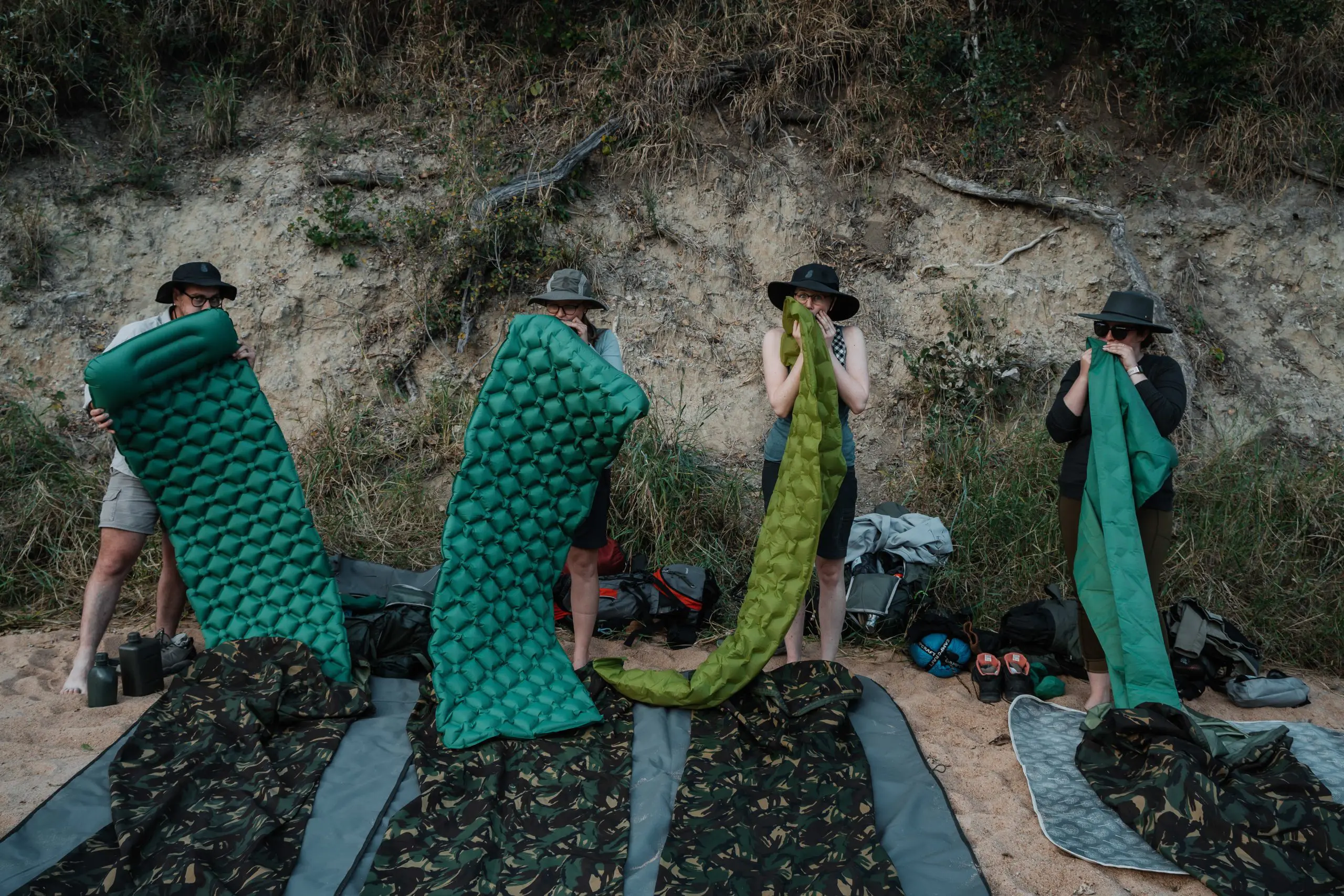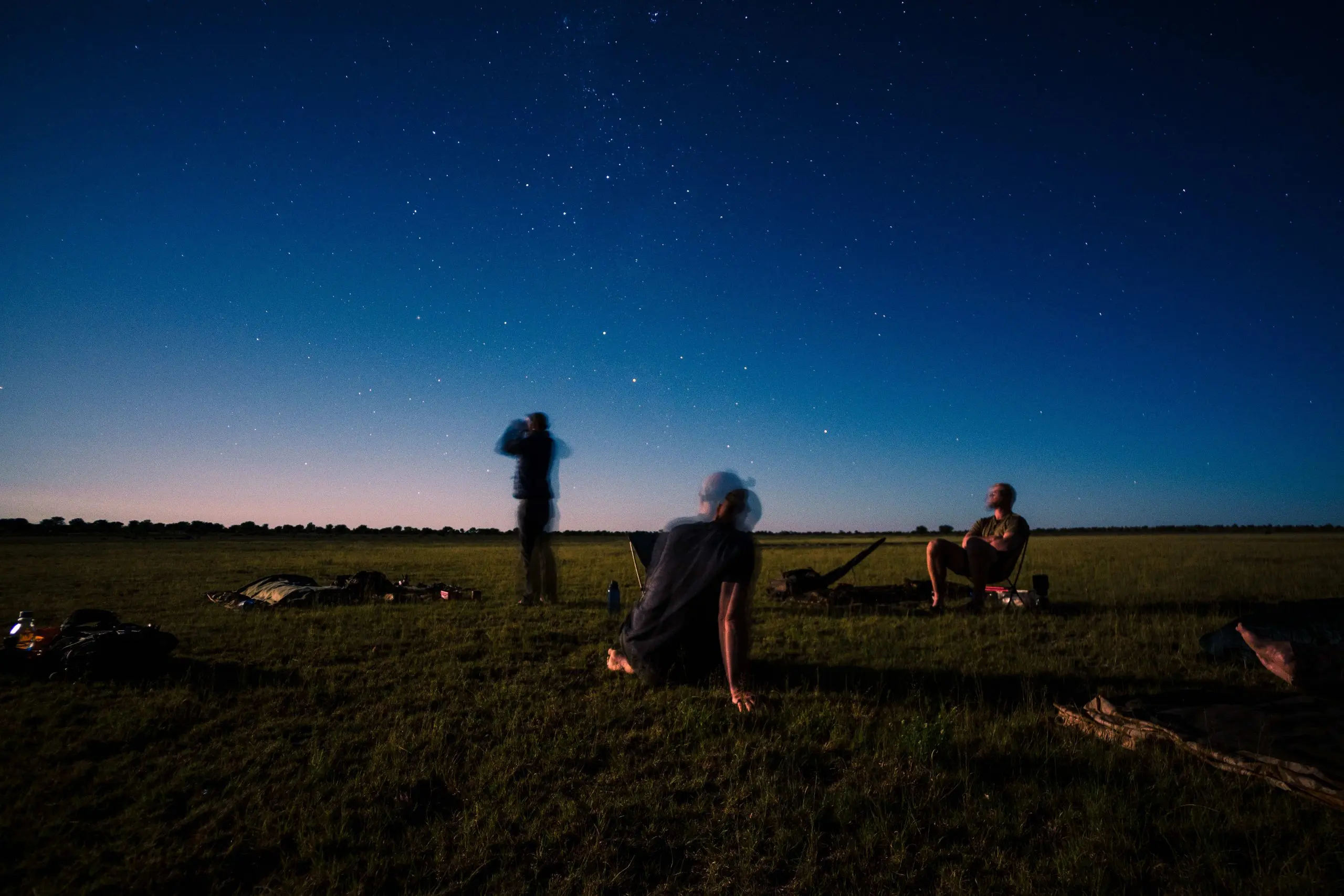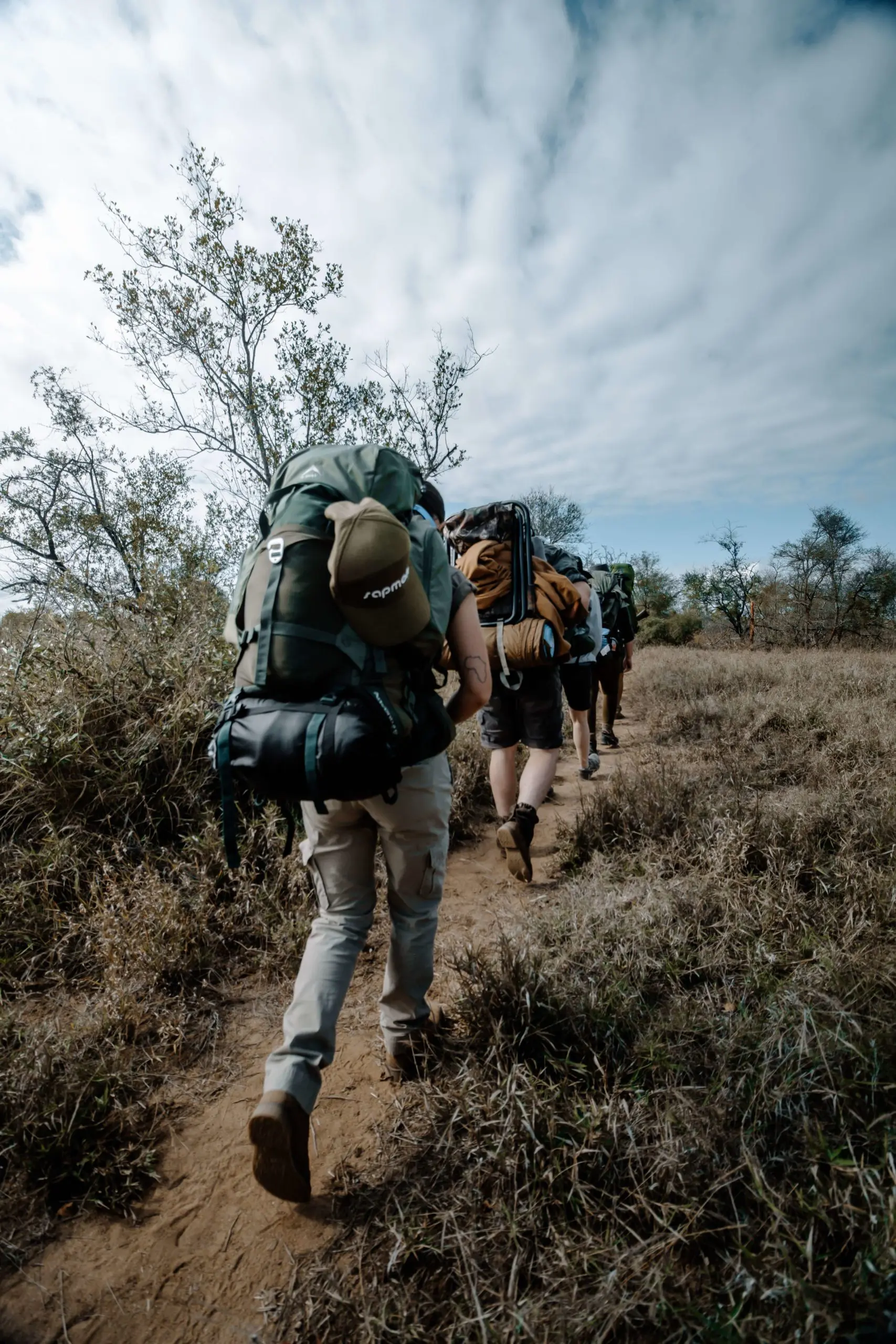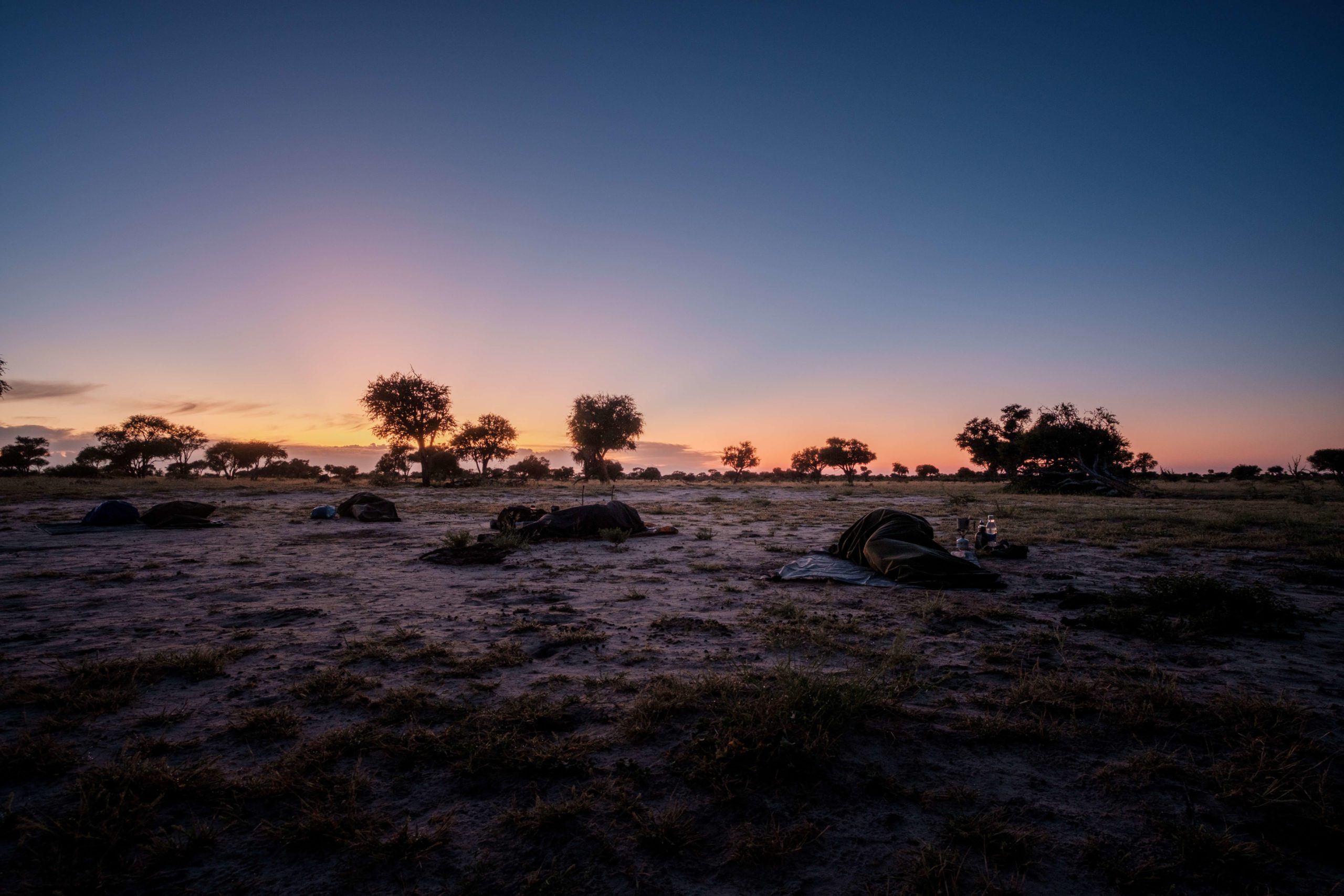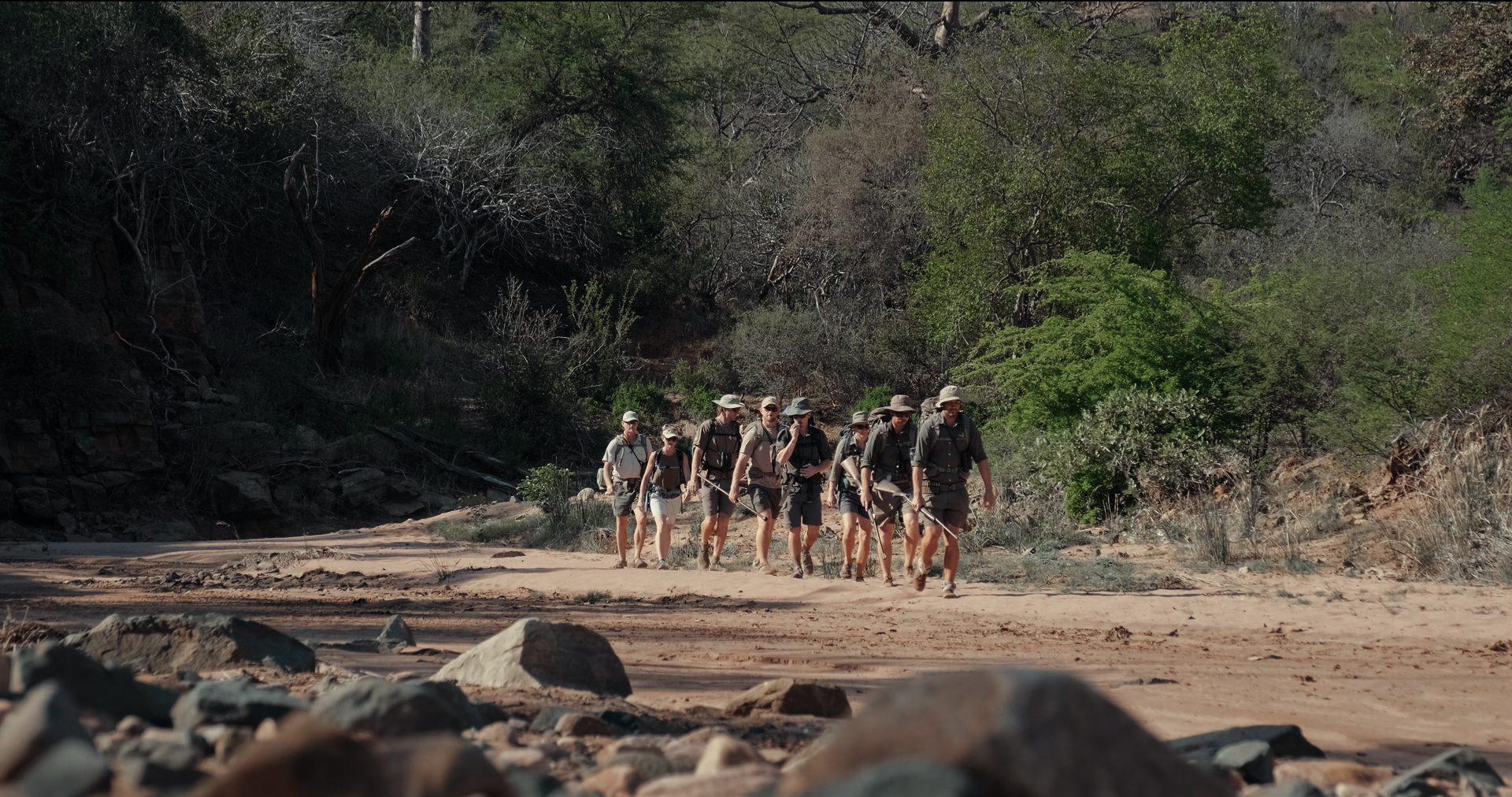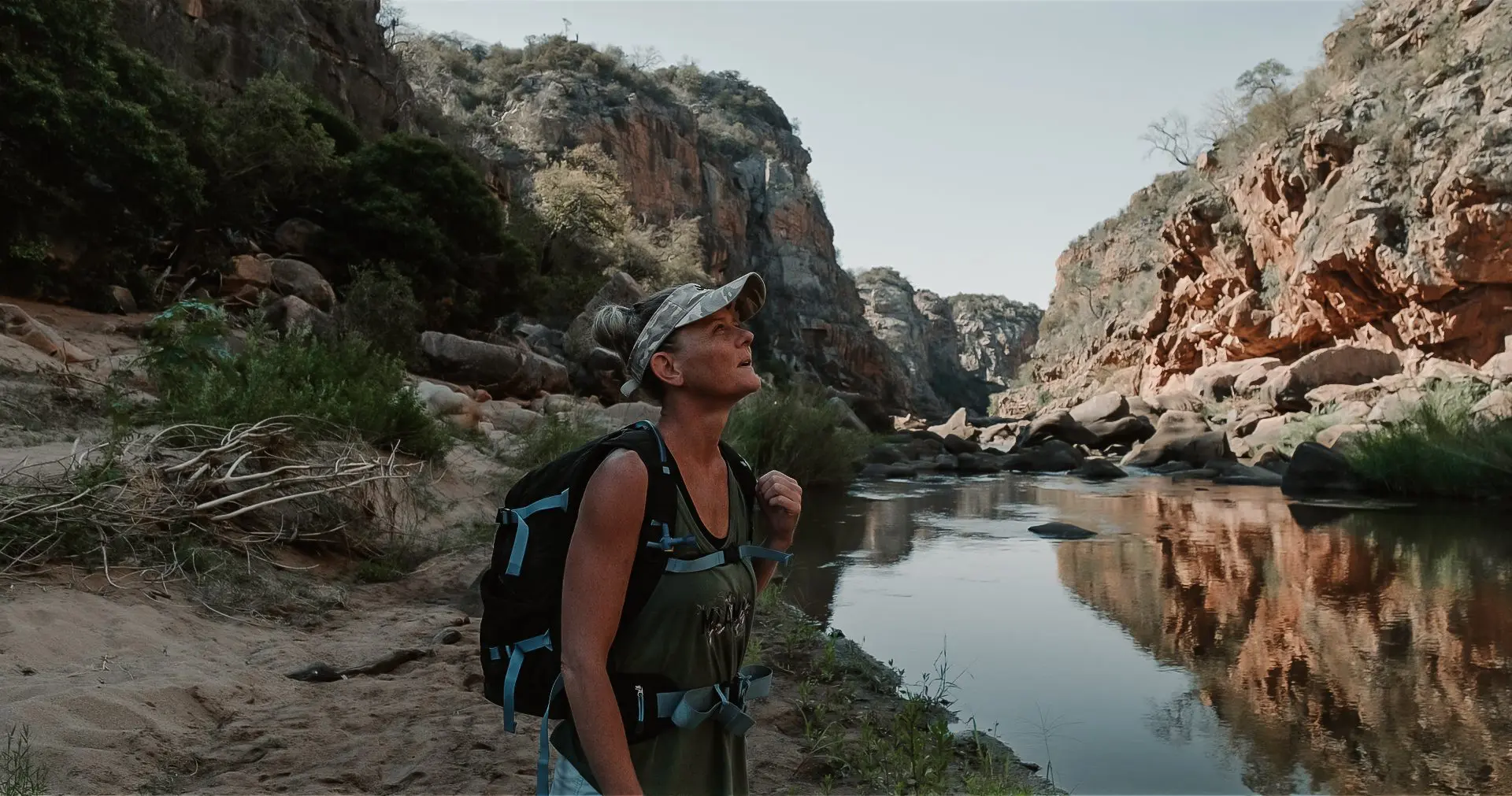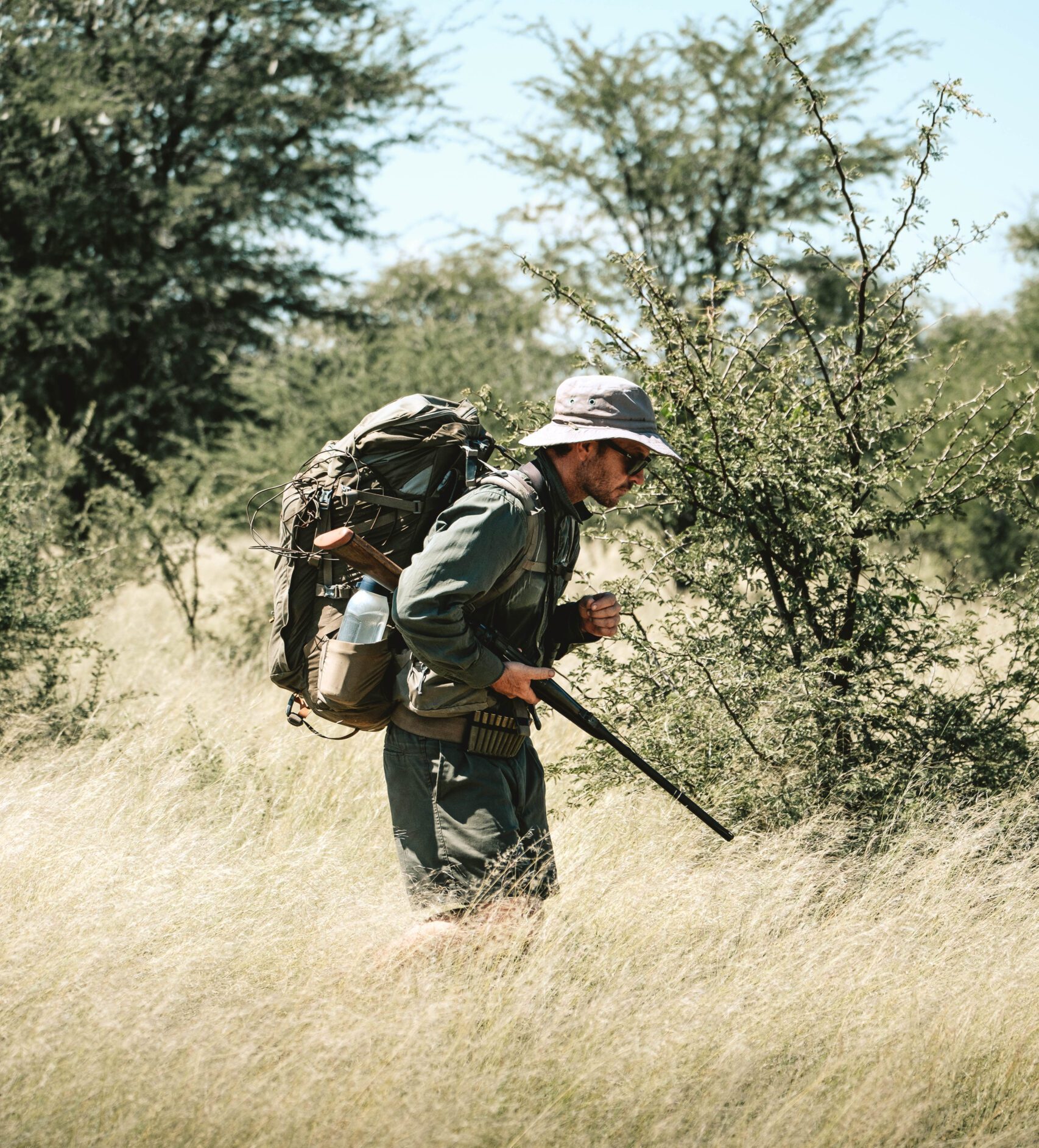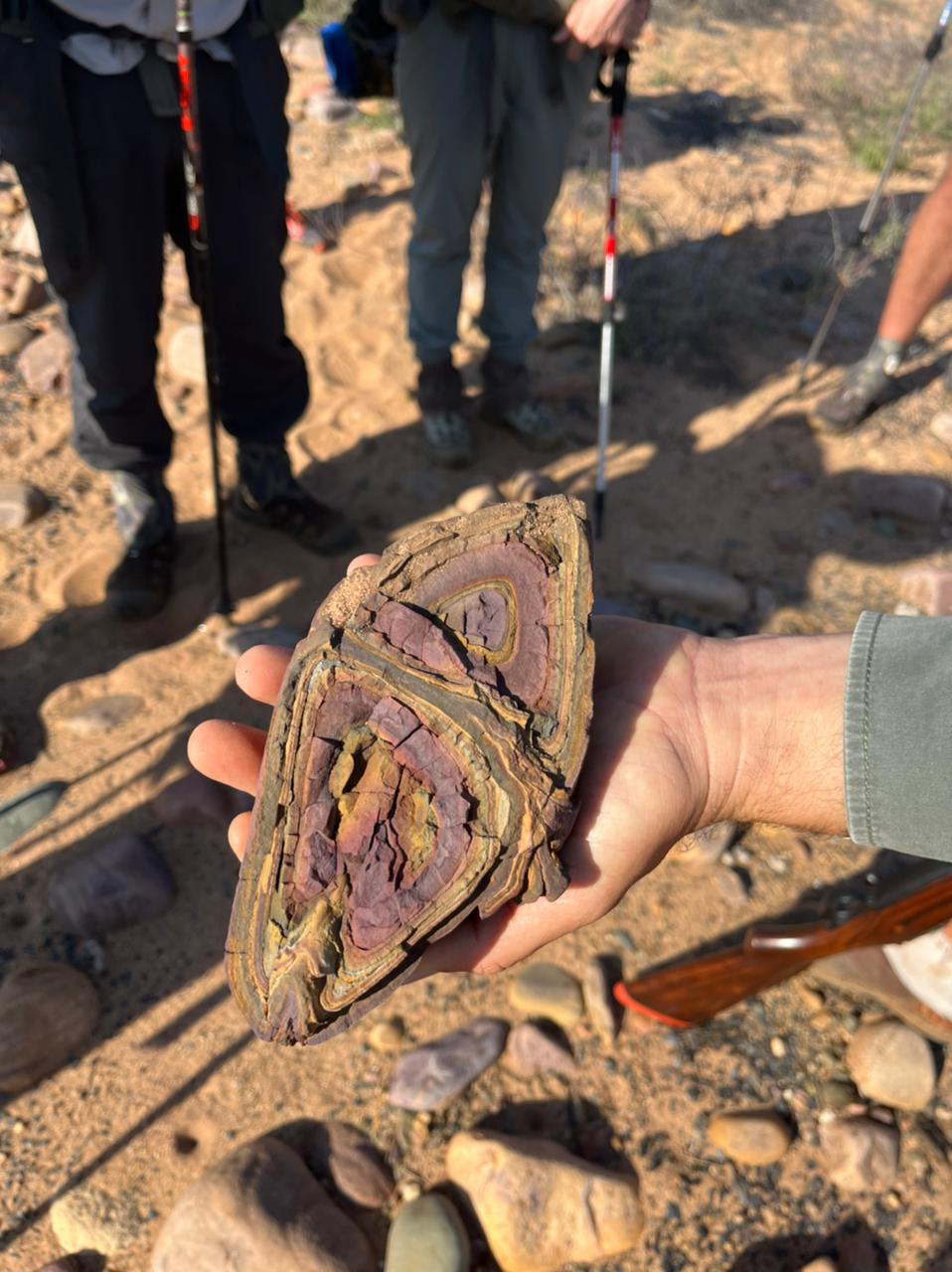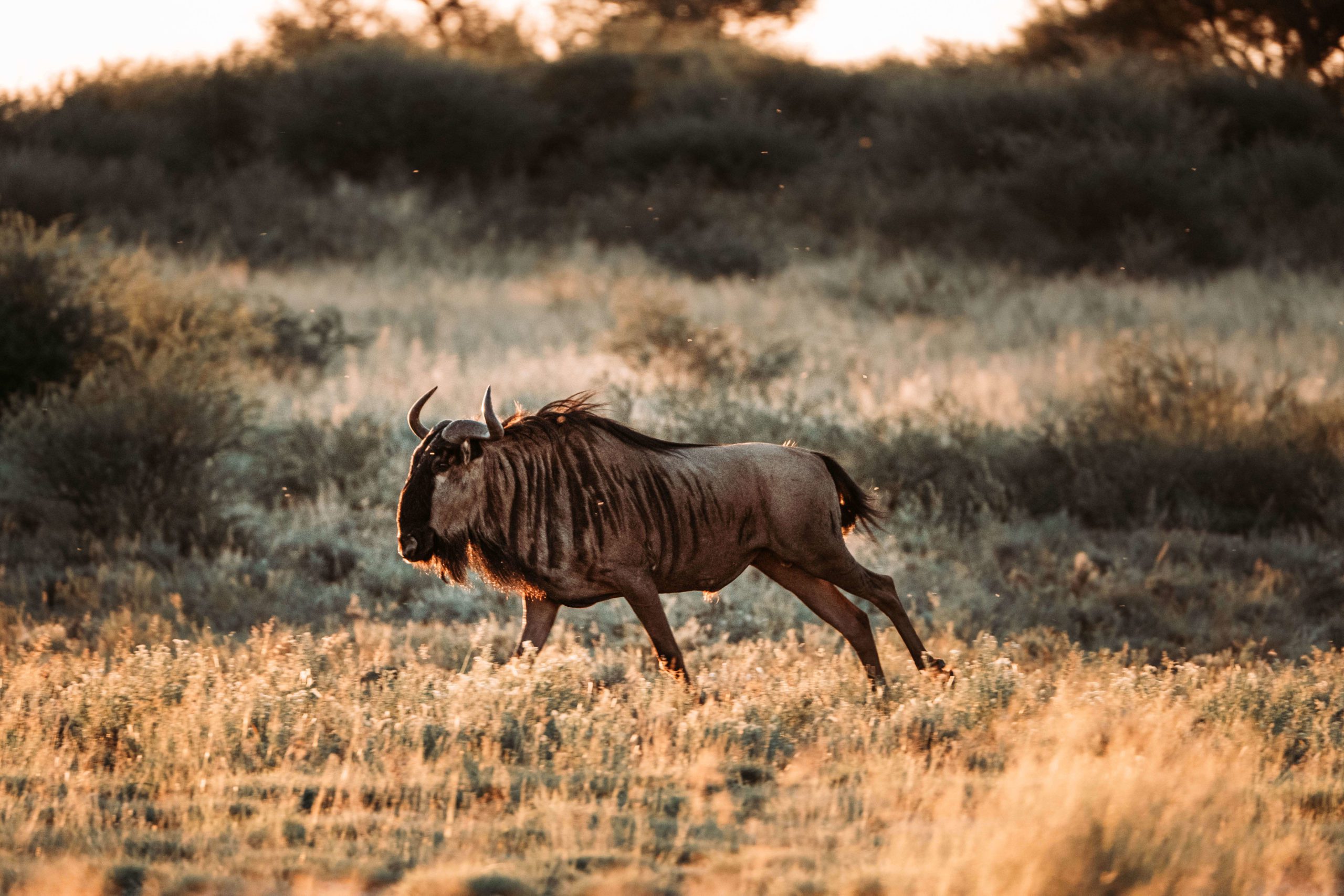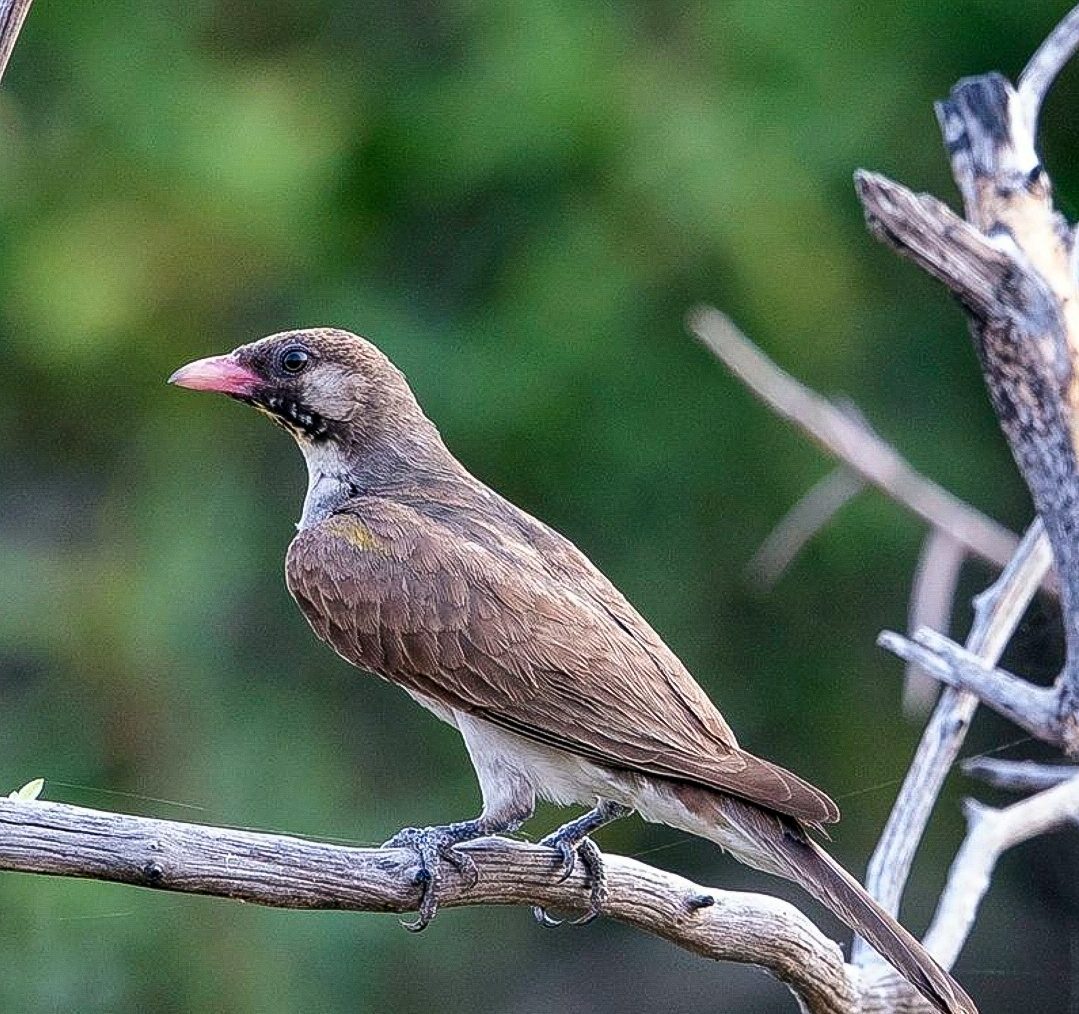By guest blogger, and modern-day adventurer, Robert Fields.
I have a story to share with you. It is a good story. It is big and profound and touches on everything.
This story is about walking into the African bush to interact with the wild beasts straight out of the Animal Cracker boxes of our childhood daydreams. It is a story about entering the most wildlife intensive ecosystem on the planet on foot guided by Yoda and Mr Miyagi who are armed with large calibre rifles. The walks are ethical and educational and yet they come with danger and adrenaline akin to attempting a first ascent or running a rapid that push skill and experience to the limit. Going into the African bush on foot with these men is closer to a mind-expanding, world-connecting mushroom trip than it is to a National Park ranger walk in the United States. The combination of the most compelling ecosystem on earth and the most knowledgeable guides on earth reveals new depths and dimensions of a world we thought we knew. In the process the experience unleashes emotional charges as powerful as the best lines and passages of Thoreau, John Muir, Aldo Leopold or Barry Lopez. This is more than just a nature walk. These backcountry safari hikes in Africa are a return to a world we were once at home in but have become estranged from. A wild place not conquered by man and where he is not the biggest or most powerful. The walks reconnect us to something we have been missing and needing, and they teach lessons about everything; life, death, environmental degradation, the water cycle, fire, grass seed dispersal, butterflies, baby birds, cocoons, the consequences of exploding stars and the reality of our own fleeting time here in this beautiful and incomprehensible place. This is an experience like none other. I will try to explain. If you’re interested, we would love to talk.
There’s something you need to know about me. I’m not a green soft-boy who went on a cool trip and got the feels and wants to tell the world. I am not an aspiring writer trying to get a foot in a door. I am a lifelong travel and wildlife maniac. For 27 years I have walked, biked, canoed, bussed, backpacked, roadtripped, rafted, flown and sailed all over the world. I am a dirtbag traveler extraordinaire. I’ve hitchhiked 50,000 miles on three continents including clear to the Arctic Ocean in Alaska, twice. I have been interrogated by guerillas in a Colombian jungle, crossed the biggest wilderness in Central America alone in a packraft and been chased by pirates off the coast of Haiti.
The most fascinating thing to know about sailboat chases is how slow they are. Once the knots are tied and you cannot get more from the wind there is not a lot to do but think. Without the cuts, edits and dramatic score of the movies time moves slowly. It is perhaps more like the wait for the results of a cancer biopsy than the frenzy of a Hollywood car chase. The dread is overwhelming, but the world is quiet and still.
In my wanderings I have found a wild kiwi on a remote windswept New Zealand beach filled with the stench of hundreds of dead pilot whales. While trailing fresh tiger spoor in a Malaysian rainforest I heard the ridiculously cute growl of a newborn baby sun bear hidden by its mother in thick brush along a creek. I swam in the warm waters of the Caribbean Sea with great polka-dotted whale sharks that circled mindlessly against a backdrop of millions of shimmering baitfish whose movements and multitudes confounded my mind and my senses. I have been around. I have seen and done some terrific things. I mostly did them the hard way and mostly on my own. I don’t think there is a table of brave, adventurous dumbfucks I could not sit at even if my stories are not the ones that are printed in magazines. I tell you this because guided multi-day, unsupported walks in Africa are the most compelling and powerful thing I have happened upon anywhere in the world in my 45 years of bumping around. There is a story here.
At its most basic, our story is about guided backcountry safari hikes, but it is about more than that. It is about more, in part because our story takes place in Africa. To go out on foot into the savanna of southern Africa is to go home, it is to stand in the warmth of the African sun, beneath the trees where man was born, bathed in a chorus of insects and birds that have sung their same songs since our first primordial memories were formed, and to look out onto vast plains populated with a bestiary of the most evocative animals on earth. The African landscape of grasslands peppered with baobab and acacia trees and home to great herds of fantastic beasts is iconic. More than Everest, more than the Amazon or Arctic, it is the wild place that every schoolchild on earth recognizes, knows and can name. It is the only shared homeland of all of humankind and it is Earth’s last remaining wild, violent and beautiful Garden of Eden.
Africa has the last ecosystems on earth to still support the big charismatic megafauna that have gone extinct across most of the planet. From the moa of New Zealand, to the woolly rhinoceros of ice age Europe, to the mastodon of North America, many of the great beasts of prehistory were hunted to extinction as the planet warmed and humanity spread. In Africa the large animals that provided the most food to prehistoric hunters were able to evolve alongside man. The elephant and hippopotamus survived extinction because they were always man’s neighbors. They had time to learn and adapt and survive. Nowhere else on earth does such a plentitude and diversity of massive animals still roam.
Trees are in a constant arms race with those that would eat their leaves. They use thorns and poisons and myriad tricks to try and keep their precious leaves. Grasses, on the other hand, give themselves freely to grazers. The veld after the rains is a buffet for termites and ants, warthogs, ostrich, scrub hares, guinea fowl and flocks of red-billed quelea, ten million strong, that move across the land stripping seed from stalk in a manner more akin to an insatiable plague of locusts than to the friendly avians of North American reckoning. In a square mile of mixed veld, a person might count more species of antelope than they possess fingers to count on. The grassy savanna supports herds of zebra, buffalo, wildebeest and the giant and charismatic grazers we know from field trips to the zoo. Powered by the grass are hippo, rhino and the herds of elephants that bring wonder and joy so universally that I suspect our love for them is implanted somewhere within our very DNA. The profusion of grass powers a density of large animals that is unparalleled anywhere on earth. Yellowstone is North America’s premier wildlife park, but the abundance and diversity that Yellowstone’s montane ecosystem can support is a shadow in comparison to the wealth of the savannas of Africa.
Note to self – quit saying diversity and abundance.
The plethora of the smaller creatures in the veld is greater than that of the large ones. One-hundred species of termite live beneath Kruger National Park (South Africa) and their combined weight is greater than that of everything that walks above in the light of day. On the plains and along the wooded rivers are terrapins and tortoises, otters and aardvark, giant snails and dwarf mongoose. In the wet months comes an infusion of migratory birds from across all of Europe, Asia and North Africa. These smaller creatures, a mantis disguised as a waving blade of grass, or a chameleon flashing color on a tree branch, its eyes unhinged, are hard to see or appreciate from a safari vehicle. It is fine to catch a glimpse of a scarlet-chested sunbird from a passing vehicle, but it is another thing to rest in the shade of a tree, hear the flutter of wings and look up to see that same sunbird alight on a flower to drink.
The profusion of life on the veld is incredible. I have seen nothing like it anywhere on earth. The diversity and complexity of our world is apparent and on full display. It is in-your-face-nature. It fills the eyes and ears and if you do not watch out it will stick to your shoe and fill your nostrils too. The circle of life is apparent. It cannot be ignored in this place more so than any other I have visited. The complexity and beauty of the natural world becomes graspable when you stand amidst the dung and scat and bones and carapaces and tracks and feathers of life. We are reminded that all of humanity is just a small part of something bigger. One’s mind can almost fathom the turning of the great wheel for five billion years. The unconcealed goings-ons of nature in the savanna brings us closer to glimpsing the horror and beauty and immensity of nature and life, and it is a powerful experience.
That in-your-face grandeur and charisma of the animals and plants of the savanna make for incredible walks, but the experience is greatly enhanced by the most competent and knowledgeable guides in the world. I have been through the Amazon with an indigenous guide who smelled a herd of white lipped peccary moving through the understory a half mile away, and we went and found them grunting and teeth clacking in the dark of the understory. In Belize, I had the pleasure of hiking with ivy league entomology professors who could answer questions about ants and water beetles that I had harbored since childhood. On the remote Platano River in Honduras, I repeatedly put my life in the hands of a jungle raft guide with the skill to navigate wilderness whitewater that had no overland exits for days, was often unscoutable, and that saw only a handful of boats in a year. I have met some incredible guides all over the world, but none had the depth of knowledge, diversity of skill and the compelling workplace of these men guiding in the Greater Kruger.
… Continue reading ‘Backcountry Hiking Safari – Part 2’ in the next Blog Post …


